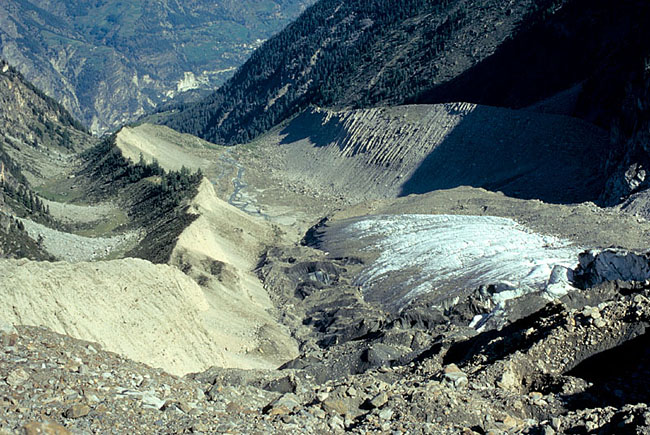| At the end of the last Ice
Age, approximately 11 500 to 11 000 calendar years ago, mean annual temperatures
rose considerably within a few decades. This marked the beginning of the
Holocene or Postglacial age. During this era
the mean summer temperatures varied very little over the long- term, approximately
±1� C compared to the present. As a result, the movement of the
glaciers, which had melted way back into the Alpine valleys at the beginning
of the postglacial age, was limited to a small area called the glacier
forefield (“Gletschervorfeld”), which in many cases is
easily identified today, owing to its meagre vegetation. The forefield
is found between the terminal moraine that marks the glaciers' greatest
extent (e.g. as in 1850/60) and the glaciers' current limit. Within the
postglacial periods of warmer and cooler conditions there have been series
of fluctuations from maximum to minimum extensions, some glaciers shrinking
to even less than their current state. The last noticeable warm period
is called the Mediaeval Climatic Optimum, from around the end of the 8th
century to about 1300, and the last marked cold period is called the Little
Ice Age (around 1300 to 1850/60). Since glaciers are good indicatiors
of climatic change, their fluctuations indirectly reflect the natural
variations in climatic conditions since the last Ice Age.
To reconstruct the climatic fluctuations and landscape evolution
during the Holocene we also can use pollen
analysis, analysis of lake
sediments and dendrochronology.
|

